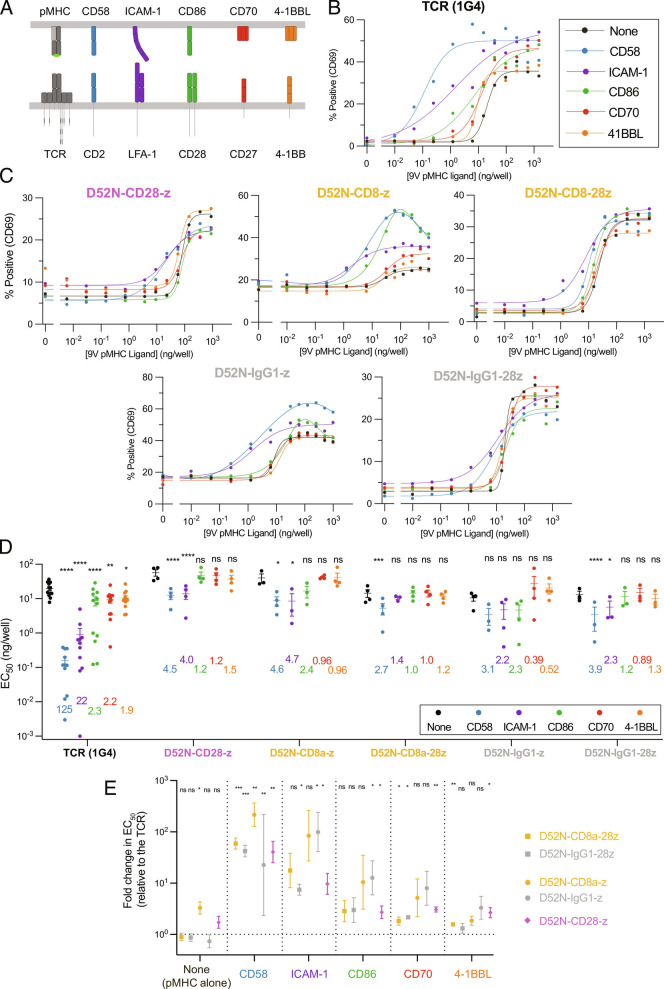Fig. 2.
Systematic engagement of accessory receptors identifies that CARs are inefficient at exploiting the adhesion receptors CD2 and LFA-1 relative to the TCR. (A) Schematic of accessory receptors and their ligands. (B and C) Representative dose–response curves showing T cell activation by upregulation of surface CD69 measured by flow cytometry after 24 h using the solid-phase stimulation assay. T cells were presented with purified pMHC alone (“None”) or with a fixed concentration of 250 ng/well of the indicated accessory receptor ligand (colors) for the (B) TCR and (C) the indicated CARs. (D) The EC50values for the indicated antigen receptor and purified ligand condition were obtained by fitting a Hill function to each dose–response curve. Individual EC50values for each antigen receptor are from an independent experiment (N ≥ 3). The numbers indicate the fold-change in EC50induced by the accessory receptor ligand relative to pMHC alone (“None”), and statistical significance is determined by a paired t-test on log-transformed data. (E) The data in (D) are presented in a different format showing the fold-change in EC50between the TCR and the indicated CAR for pMHC alone or the indicated accessory receptor ligand. The fold-change is compared using a one-sample t-test to a hypothetical value of 0 on log-transformed data. *P-value ≤ 0.05, **P-value ≤ 0.01, ***P-value ≤ 0.001, ****P-value ≤ 0.0001.

